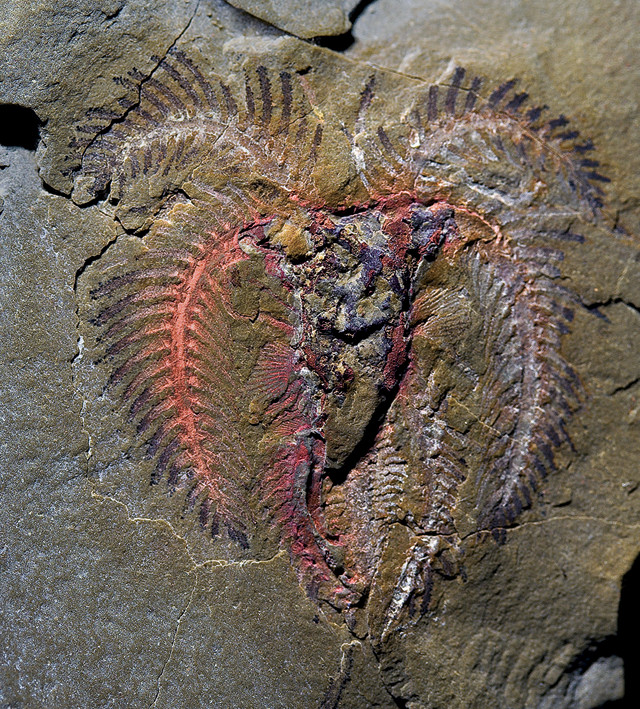
by Mary Caperton Morton Thursday, November 12, 2015

This marrellomorph arthropod is one of many fossils found in Morocco's Lower Fezouata Formation. Credit: Peter Van Roy.
Many new life-forms emerged during both the Cambrian Explosion and the Great Ordovician Biodiversification Event, but a lack of fossils from the 40-million-year span in between has left scientists wondering if a period of evolutionary stasis took hold between the two booms. Now, the discovery of a prodigious bed of fossils in Morocco that date to between 485 million and 444 million years ago indicates that the Ordovician boom may actually have been a continuation of the Cambrian Explosion, with little to no evolutionary downtime in between.
Since it was discovered five years ago, Morocco’s Lower Fezouata Formation has revealed fossils from more than 160 genera, and with only a fraction of the site excavated, many more are expected to be found. The assemblage confirms that some of the oldest marine animals on the planet — including armored worm-like creatures and giant lobster-like sea beasts — survived millions of years longer than previously thought. For example, the anomalocaridids, early ancestors of arthropods, were thought to have gone extinct at the end of the Cambrian. But finds in the Fezouata indicate the formidable predators were still flourishing more than 25 million years later.
The assemblage also contains evidence that some early marine creatures evolved far earlier than previously thought. “Horseshoe crabs, for example, turn out to be at least 20 million years older than we thought,” said Peter Van Roy, a research scientist at Yale University and lead author of a review article focusing on the Fezouata published in the Journal of the Geological Society, in a statement. “The formation demonstrates how important exceptionally preserved fossils are to our understanding of major evolutionary events in deep time.”
The spectacular preservation of the Fezouata fossils, which include details of soft tissues and intact organisms more than 2 meters long, is due to the fine-grained muddy sediments that buried the organisms for hundreds of millions of years.
© 2008-2021. All rights reserved. Any copying, redistribution or retransmission of any of the contents of this service without the expressed written permission of the American Geosciences Institute is expressly prohibited. Click here for all copyright requests.